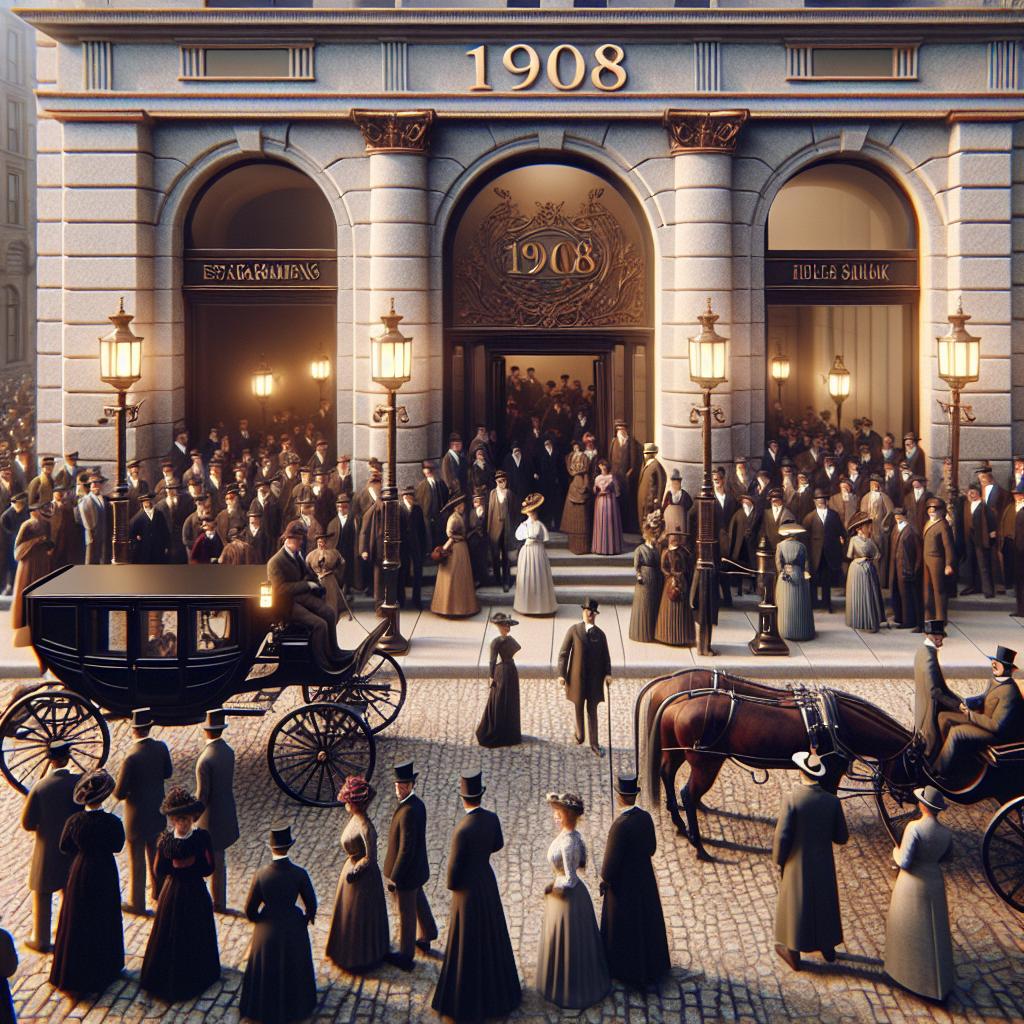

1908 Bank Grand Opening
Want to target the right audience? Sponsor our site and choose your specific industry to connect with a relevant audience.
Prominent brand mentions across targeted, industry-focused articles
High-visibility placements that speak directly to an engaged local audience
Guaranteed coverage that maximizes exposure and reinforces your brand presence
Interested in seeing what sponsored content looks like on our platform?
May’s Roofing & Contracting
Forwal Construction
NSC Clips
Real Internet Sales
Suited
Florida4Golf
Click the button below to sponsor our articles:
Sponsor Our ArticlesWhen I first saw this 1908 bank stock certificate, I knew it had some interesting connections in it to people that I was familiar with from Greenville history. Two of the signatures were names I recognized from owners of some of the most beautiful and interesting homes ever built in the city.
The signature of the president of this Fourth National Bank certificate is James Pinckney (J.P.) Rickman. He lived at 17 Pinckney St. in the biggest Victorian home in the neighborhood.
Rickman was born in 1856 in Mills River, North Carolina, and moved to Hendersonville, North Carolina, in 1883 and soon married Miss Valerie Justus.
His first business venture in Hendersonville was with a local physician, Dr. Fletcher, to run a store called Fletcher & Rickman on Main Street. He served as mayor of the city in 1887-88, sold his mercantile business, and later became a prominent banker there, organizing the Bank of Hendersonville in 1901.
Rickman’s wealth allowed him to have W.F. Edwards build him an enormous three-story Victorian home. He wasn’t able to enjoy it for very long due to relocating to Greenville to work for the Norwood National Bank. Rickman replicated the house from Hendersonville at 17 Pinckney St. in Greenville and moved here from Hendersonville in 1907.
Rickman’s involvement with Norwood’s bank appears to have either fallen through or been short-lived, as he quickly set out organizing Fourth National Bank with local Greenville officers including O.P. Earle, J.E. Johnston, C.O. Allen, and W.C. Cleveland. With capital of $100,000, the bank officially opened on July 1, 1908.
This group sought local investors, evidenced by this “temporary certificate” of stock dated July 7, 1908, and issued to a prominent local clothier, Hyman Endel.
Endel came to Greenville in 1870 from Richmond, Virginia, and soon opened a clothing business with his uncle, Harry Mark, at 120 S. Main St. called Mark and Endel. According to the Daily Piedmont in 1911, the business name changed to “Endel, The Clothier,” in 1886 with special selections of Stetson hats and gentlemen’s clothes from Schloss Bros. Clothing.
He must have seen great promise in Rickman’s endeavor as Endel himself had been a director of the People’s and Piedmont banks and bought $200 worth of stock in Fourth National Bank.
Endel’s home on North Main Street was one to rival Rickman’s in grandeur, but not in the refined Victorian manner like his. Endel’s home looked like a castle from medieval Britain with its brick and stone crenellated tower, turret, portico, and roofline.
J.P. Rickman built a three-story Victorian home in Hendersonville, North Carolina, but didn’t live there long before moving to Greenville, where he built a reproduction of the home. Photo courtesy of the author, John Nolan
Rickman’s enjoyment of his Hendersonville home was short-lived, and unfortunately his time in his Greenville residence was also limited. In early 1910, the banker became afflicted with a kidney disease then known as Bright’s disease. Today, the condition is referred to as nephritis, an inflammation of the kidneys caused by toxins, infection, or autoimmune conditions. He succumbed to the sickness that May at the young age of 54.
Hendersonville’s newspaper, the French Broad Hustler, said that, “It is extremely doubtful if any man here ever had more friends and fewer enemies than ‘Jim’ Rickman. A self-made man in every sense of the word, his acts of charity, kindness, of helpfulness have been without number, and the world is the poorer now that he is gone.”
W.C. Cleveland took over as president of Fourth National Bank and remained in that position until the bank merged with First National Bank on the corner of West McBee Avenue and Main Street in 1919.
John M. Nolan is owner of Greenville History Tours and author of “A Guide to Historic Greenville, SC” and “Lost Restaurants of Greenville, SC.”
News Summary A heart-wrenching head-on collision in Lancaster County occurred on a quiet Friday night,…
News Summary Brad Sigmon became the first inmate executed by firing squad in South Carolina's…
News Summary A South Carolina jury has awarded $700 million to the family of Brittanee…
News Summary South Carolina has been ranked as the fastest growing state for 2024 by…
News Summary SOPAKCO is set to invest $22.8 million to expand its manufacturing facility in…
News Summary Greenville's Stokes & Company CPAs is excited to announce the addition of Eve…